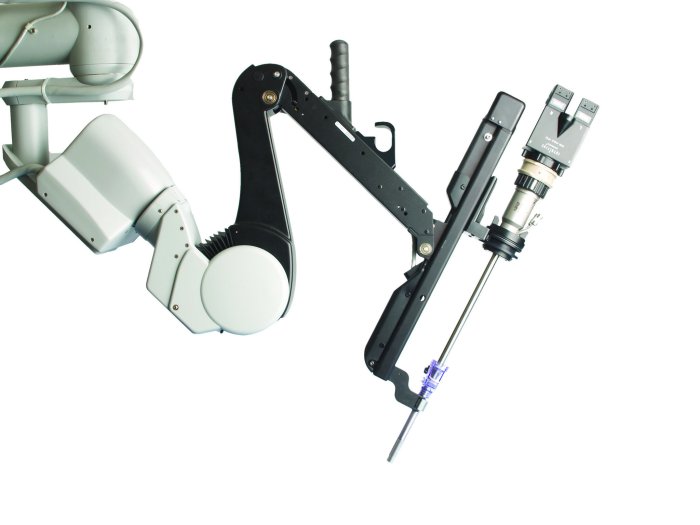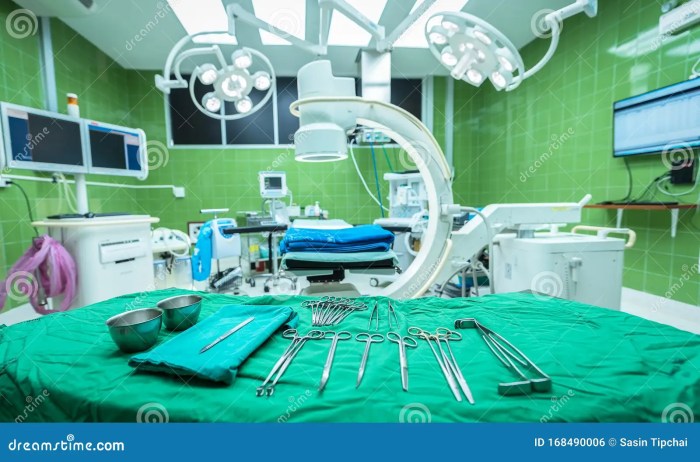
The world of surgical medical devices is a dynamic landscape of innovation, constantly evolving to meet the ever-changing needs of modern healthcare. From minimally invasive laparoscopic instruments to sophisticated robotic surgery systems, these devices play a crucial role in improving patient outcomes and revolutionizing surgical procedures. This exploration delves into the market dynamics, technological advancements, regulatory frameworks, and future trends shaping this vital sector.
This analysis considers the global market size and growth projections, identifying key players and their market share. We will examine various device types, their manufacturing materials, and applications, highlighting technological advancements such as robotics and AI. Furthermore, we will address the regulatory landscape, safety standards, and the interplay between surgical devices, medical research, and healthcare services. Finally, we’ll explore future challenges and trends that will define the future of surgical medical devices.
Market Overview of Surgical Medical Devices

The global surgical medical devices market is a dynamic and rapidly evolving sector, characterized by continuous innovation and increasing demand driven by an aging population, rising prevalence of chronic diseases, and advancements in minimally invasive surgical techniques. This market encompasses a wide range of products, from simple instruments to sophisticated robotic systems, all playing a crucial role in improving surgical outcomes and patient care.
Global Market Size and Growth Projections
The global surgical medical devices market is substantial and exhibits significant growth potential. While precise figures fluctuate depending on the source and year, estimates place the market size in the hundreds of billions of US dollars. Market research firms consistently project a compound annual growth rate (CAGR) ranging from 5% to 8% over the next decade, fueled by factors such as technological advancements, increasing disposable incomes in emerging economies, and a greater focus on ambulatory surgery centers.
For example, a report by [insert reputable market research firm name] projected a market value exceeding [insert projected value] by [insert year]. This growth is expected to be particularly strong in regions with rapidly expanding healthcare infrastructure and increasing adoption of advanced surgical technologies.
Major Players and Market Share
The surgical medical device industry is dominated by several multinational corporations, each holding a significant market share. These companies often specialize in specific product categories or surgical specialties. Key players include Johnson & Johnson, Medtronic, Stryker, Zimmer Biomet, and Boston Scientific. These companies possess extensive product portfolios, strong distribution networks, and substantial research and development capabilities. Precise market share figures vary depending on the specific product category and reporting period, but these companies collectively account for a considerable portion of the global market.
For instance, Johnson & Johnson’s Ethicon division is a major player in sutures and surgical instruments, while Medtronic dominates in cardiovascular and neurological devices. The competitive landscape is also characterized by the presence of smaller, specialized companies focusing on niche technologies or therapeutic areas.
Key Market Trends and Drivers
Several key trends and drivers are shaping the growth trajectory of the surgical medical devices market. The increasing adoption of minimally invasive surgical (MIS) techniques is a significant driver, as these procedures offer advantages such as reduced trauma, shorter hospital stays, and faster recovery times. Technological advancements, such as the development of robotic surgery systems, advanced imaging technologies, and 3D-printed implants, are further enhancing surgical precision and outcomes.
The rising prevalence of chronic diseases, such as diabetes and cardiovascular disease, is increasing the demand for surgical interventions. Furthermore, the growing focus on improving patient safety and reducing healthcare costs is driving the adoption of innovative devices and technologies that enhance efficiency and reduce complications. Finally, regulatory approvals and reimbursement policies also play a critical role in market growth.
Market Share, Growth Rate, and Key Product Categories
| Company | Approximate Market Share (%) | Estimated Growth Rate (CAGR) | Key Product Categories |
|---|---|---|---|
| Johnson & Johnson | 15-20% (Estimate) | 6-8% (Estimate) | Sutures, Surgical Instruments, Wound Care |
| Medtronic | 10-15% (Estimate) | 5-7% (Estimate) | Cardiovascular Devices, Neurological Devices |
| Stryker | 10-15% (Estimate) | 7-9% (Estimate) | Orthopedic Implants, Navigation Systems |
| Zimmer Biomet | 8-12% (Estimate) | 6-8% (Estimate) | Orthopedic Implants, Trauma Devices |
Technological Advancements in Surgical Medical Devices

The surgical landscape is undergoing a dramatic transformation, driven by rapid advancements in technology. Robotics, artificial intelligence (AI), and 3D printing are no longer futuristic concepts but integral components of modern surgical practice, significantly impacting both surgical procedures and the design of medical devices. These innovations are enhancing precision, minimizing invasiveness, and improving patient outcomes.Technological advancements are revolutionizing surgical procedures by enhancing precision, minimizing invasiveness, and improving patient outcomes.
The integration of robotics, AI, and 3D printing is leading to the development of more sophisticated and effective surgical tools and techniques. This results in shorter recovery times, reduced complications, and ultimately, better patient care.
Robotics in Surgery
Robotic surgery utilizes robotic systems controlled by surgeons to perform minimally invasive procedures. These systems offer enhanced dexterity, precision, and visualization compared to traditional laparoscopic techniques. The da Vinci Surgical System, for example, is a widely used robotic platform that allows surgeons to operate with greater control and precision, leading to smaller incisions, less pain, and faster recovery times for patients.
Robotic systems are particularly beneficial in complex procedures requiring intricate movements and high levels of accuracy, such as cardiac surgery and neurosurgery. The enhanced visualization provided by these systems also contributes to improved surgical outcomes.
Artificial Intelligence (AI) in Surgical Device Design and Operation
AI is increasingly being integrated into surgical devices and procedures. AI algorithms can analyze medical images, predict surgical risks, and assist surgeons in real-time during operations. For example, AI-powered image analysis can help identify tumors more accurately and guide surgeons during the resection process. AI-assisted robotic surgery systems can provide haptic feedback to the surgeon, improving their sense of touch and control during the procedure.
Furthermore, AI can be used to personalize surgical plans based on a patient’s specific anatomy and medical history, further enhancing the precision and safety of surgical interventions. The use of AI in surgical planning and execution is still evolving, but its potential to transform surgery is significant.
3D Printing in Surgical Device Fabrication and Planning
D printing technology is revolutionizing the design and fabrication of surgical devices and implants. It allows for the creation of highly customized implants and tools tailored to the individual patient’s anatomy. This personalized approach reduces the risk of complications and improves the fit and function of implants. 3D-printed models of patient anatomy can also be used for pre-operative planning, allowing surgeons to rehearse procedures and anticipate potential challenges.
Furthermore, 3D printing is enabling the creation of complex surgical instruments that are not possible to manufacture using traditional methods. This technology is rapidly expanding the possibilities for surgical innovation and personalized medicine.
Comparison of Traditional and Advanced Surgical Techniques
| Feature | Traditional Surgical Techniques | Advanced Surgical Techniques (Robotics, AI, 3D Printing) |
|---|---|---|
| Invasiveness | Often involves large incisions | Minimally invasive, smaller incisions |
| Precision | Limited precision, dependent on surgeon’s hand movements | Enhanced precision due to robotic systems and AI guidance |
| Recovery Time | Longer recovery periods | Shorter recovery times, reduced hospital stays |
| Complications | Higher risk of complications | Reduced risk of complications |
| Customization | Limited customization of implants and tools | Highly customized implants and tools through 3D printing |
Emerging Technologies in Surgical Procedures
Emerging technologies like augmented reality (AR) and virtual reality (VR) hold immense potential for revolutionizing surgical training and procedures. AR overlays digital information onto the surgeon’s view of the surgical field, providing real-time guidance and enhancing visualization. VR allows for immersive simulations of surgical procedures, enabling surgeons to practice complex techniques and improve their skills in a safe and controlled environment.
Furthermore, nanotechnology and bioprinting are emerging fields that could further advance surgical procedures in the future, leading to even more precise and personalized interventions. The development and integration of these technologies are ongoing, but their potential to reshape the future of surgery is undeniable.
In conclusion, the surgical medical device industry is a complex and rapidly evolving field, characterized by continuous innovation and stringent regulatory oversight. The convergence of technological advancements, increasing demand for minimally invasive procedures, and the pursuit of personalized medicine are shaping the future of surgical interventions. Understanding the market dynamics, regulatory landscape, and emerging trends is crucial for stakeholders across the healthcare ecosystem to navigate this dynamic sector effectively and deliver improved patient care.
Top FAQs
What are the risks associated with surgical medical devices?
Risks can include infection, bleeding, adverse reactions to materials, device malfunction, and complications related to the surgical procedure itself. Thorough pre-operative assessment and careful selection of devices are crucial to minimize these risks.
How are surgical medical devices sterilized?
Sterilization methods vary depending on the device material and design. Common methods include steam sterilization (autoclaving), ethylene oxide gas sterilization, and radiation sterilization.
What is the lifespan of a surgical medical device implant?
The lifespan varies greatly depending on the type of implant and individual patient factors. Some implants are designed for permanent use, while others may require replacement after a certain period.
How are new surgical medical devices approved for use?
Approval processes vary by region but generally involve rigorous testing, clinical trials, and regulatory review by agencies like the FDA (in the US) or the EMA (in Europe) to ensure safety and efficacy.

